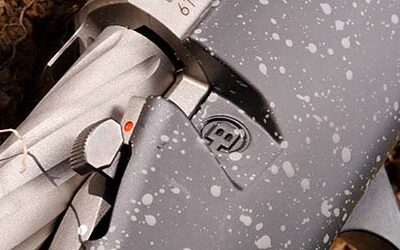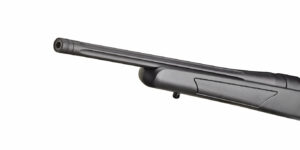To Flute or Not To Flute

To Flute or Not To Flute
This blog is the third in a series of firearm terminology we often hear in the hunting and shooting industry. I’ll go over some of these terminology listed below for each blog segment in this series for the next few months.
- Free Floating Barrel
- Muzzle Brake, Flash Suppressor
- Fluting
- Bedding
- Rifling
- Bore-Sight
- Suppressors, Moderators, Silencers, Can
Keep in mind there are so many other terms and acronym related to this industry that isn’t on here. I will highlight the most common words and discuss a few on each topic to explain what those words are and its meaning within the limits of a blog without turning it into a book.
What is Fluting?
In firearms terminology, the fluting of any firearm refers to the removal of material from the cylindrical surface like the bolt and barrel of a rifle or the cylinder of a revolver pistol that carries the ammunition. Fluting is a technical method of removing metals and creating grooves along the surface of a firearm as seen on most revolver ammo cylinder or bolt action rifle either on the barrel or the bolt itself.

Fluted barrel reduces weight and cools down the barrel quicker vs. the same barrel profile.
The debate of having a fluted barrel versus a non-fluted barrel attracts some interesting campfire conversation from all sides. So the question remain, does a fluted barrel really make that big of a difference in the performance of a rifle? Depending on the person you’re asking, a fluted barrel can either be the solution to all your worries or be the opposite and turn out to be a total waste of your money, especially for those that are getting their barrels done (after-market).
Rifle and barrel manufacturers will sometime conduct several analyses into how fluting affects the way each different style of barrel is made during the barrel making process to help alleviate any added potential stress to the barrel. However, let’s go over the same process (barrel-fluting) done on a rifle after-market. Will fluting affect consistency or accuracy from two different barrels with the same contour profile from different companies? That’s a million dollar question and I don’t think anyone really has the time to thoroughly research into the specifics of it all to provide enough data to determine if there are any big differences in performance from barrels fluted at the factory vs. after-market fluting.
Let’s be honest, a fluted barrel does look appealing, but besides the look, does it do anything else? Let’s go over some of the pros and cons.
What are the Pros and Cons of a Fluted Barrel or Bolt?
Pros: So what are the advantages of a fluted barrel or bolt?
- Reduction in weight for those who seek lighter rifles.
- Aesthetic appeal (barrel and bolt).
- Cools quicker vs. same barrel profile.
Cons: Not a lot of disadvantages, but there are some. Let’s go over a few of them that I think is rare, but can happen.
- Small dirt and debris can lodge itself between the action and the fluted bolt grooves which can cause disruption in feeding and ejecting.
- Potential additional stress on bolt/barrel causing concerns and issues (after-market flute)

Are there any advantages to a fluted bolt other than aesthetic and weight reduction?
A lot of metallurgist and gunsmith will agree that whenever you remove metal parts, you’re taking away some of that core strength from that object and if done improperly, taking too much of it off, it will have an adverse effect on the parts and cause some serious safety concerns. A fluted barrel does not provide more stiffness nor is it more rigid than a non-fluted barrel that a lot of speculated notions would indicate. Ask any reliable gunsmith and they’ll tell you it doesn’t because you’re taking away some of those stiffness by shaving off those metals parts. Doesn’t matter what spiral or helical flute pattern you think will help the barrel and create stiffness; none of it offers anymore stiffness than it already has.
Issues and Problem Solving
There are really not a lot gripes and complaints about fluted barrels out there. Most shooters that decide to get a rifle with a flute will either look for one already fluted or get a flute job done on their existing one. A botched job on a barrel can be replaced with a different barrel easier than a botched job on a bolt if done improperly.
Conclusion and Question
I honestly don’t think there’s enough information on the general topic of fluting out there for the shooting community to really fully understand any big advantages and disadvantages other than what’s already out there. We know the aesthetic look of it can be a big deciding factor for some shooters to buy, but for those that got their barrel fluted after-market; my question is whether it was worth it and did it improve the rifle’s performance other than giving it a new look? Let me know your experiences with fluted barrel.
About the Author
Al Louangketh is the Bergara Rifles International Pro Team manager and Senior Editor for the Bergara Rifles International blog. He holds a PhD in Wildlife Science and is a retired U.S Army Veteran living in Germany.
Feel free to contact him for any questions you may have.
